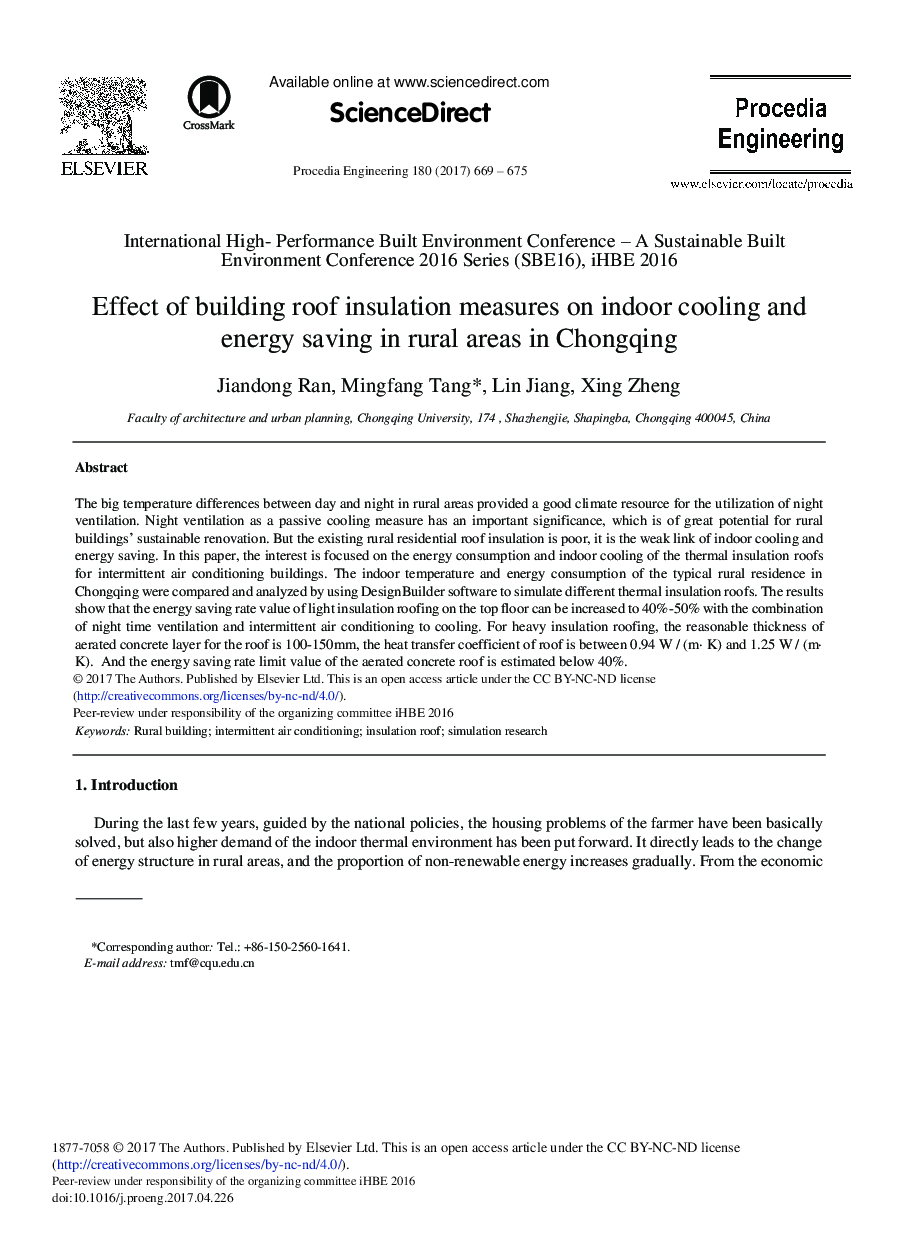| Article ID | Journal | Published Year | Pages | File Type |
|---|---|---|---|---|
| 5028971 | Procedia Engineering | 2017 | 7 Pages |
The big temperature differences between day and night in rural areas provided a good climate resource for the utilization of night ventilation. Night ventilation as a passive cooling measure has an important significance, which is of great potential for rural buildings' sustainable renovation. But the existing rural residential roof insulation is poor, it is the weak link of indoor cooling and energy saving. In this paper, the interest is focused on the energy consumption and indoor cooling of the thermal insulation roofs for intermittent air conditioning buildings. The indoor temperature and energy consumption of the typical rural residence in Chongqing were compared and analyzed by using DesignBuilder software to simulate different thermal insulation roofs. The results show that the energy saving rate value of light insulation roofing on the top floor can be increased to 40%-50% with the combination of night time ventilation and intermittent air conditioning to cooling. For heavy insulation roofing, the reasonable thickness of aerated concrete layer for the roof is 100-150 mm, the heat transfer coefficient of roof is between 0.94 W / (m· K) and 1.25 W / (m· K). And the energy saving rate limit value of the aerated concrete roof is estimated below 40%.
